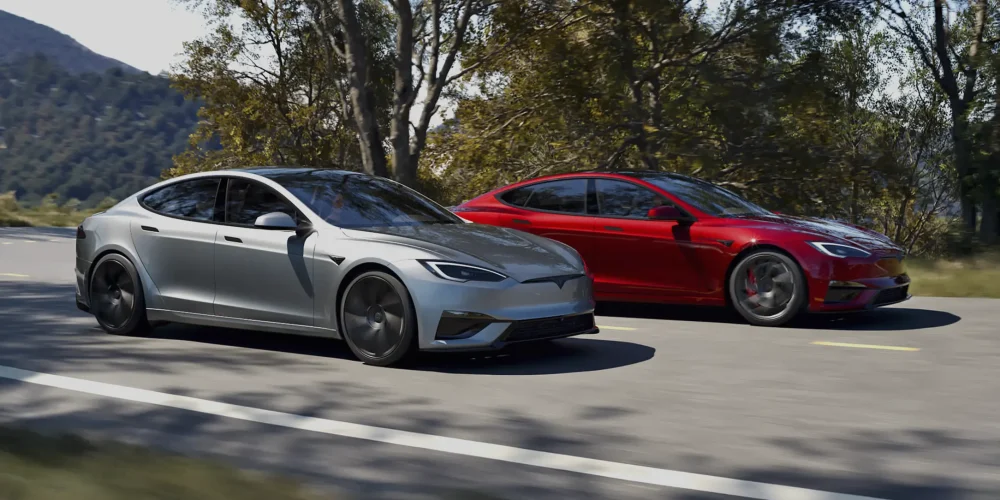
Everything You Need to Know About How to Charge a Tesla Model S at Home and on the Road
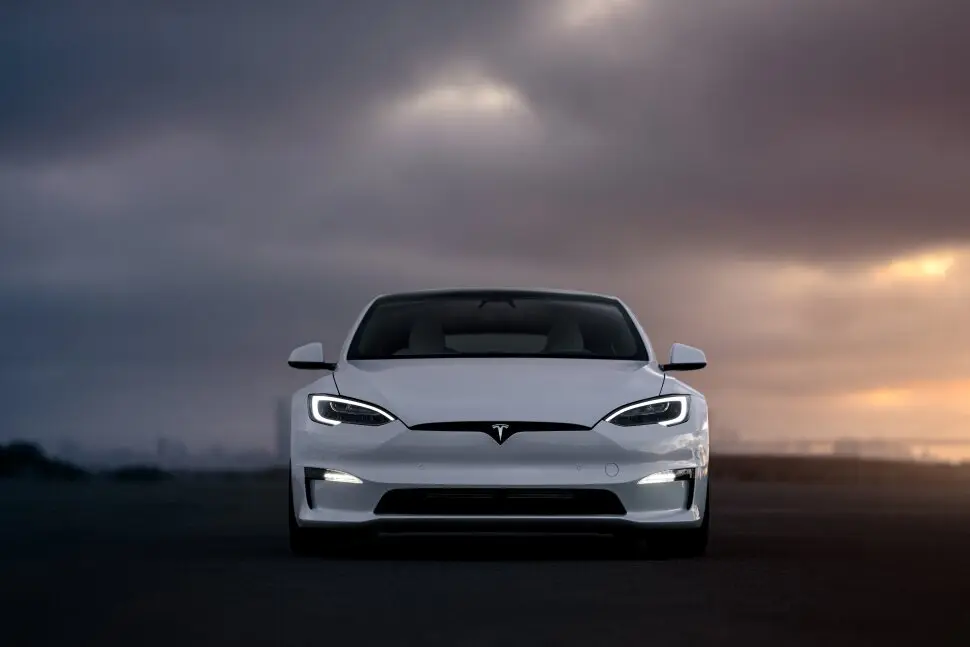
The Tesla Model S, the pinnacle of Tesla, remains one of the most refined and capable electric sedans in the world. Known for its powerful acceleration and impressive range, packed in a sleek design. The Tesla Model S is available in two trims, the Long Range AWD and the high-performance Model S Plaid. Both share Tesla’s advanced battery platform and lightning-fast charging capability.
In this guide, we’ll explain how to charge a Tesla Model S, covering charging types, port compatibility, estimated charging times, and costs. Whether you’re plugging in at home using a DUEVOLT 48 Amp Level 2 EV Charger or hitting the road with a Supercharger, this guide will help you understand how to get the most out of every charge.
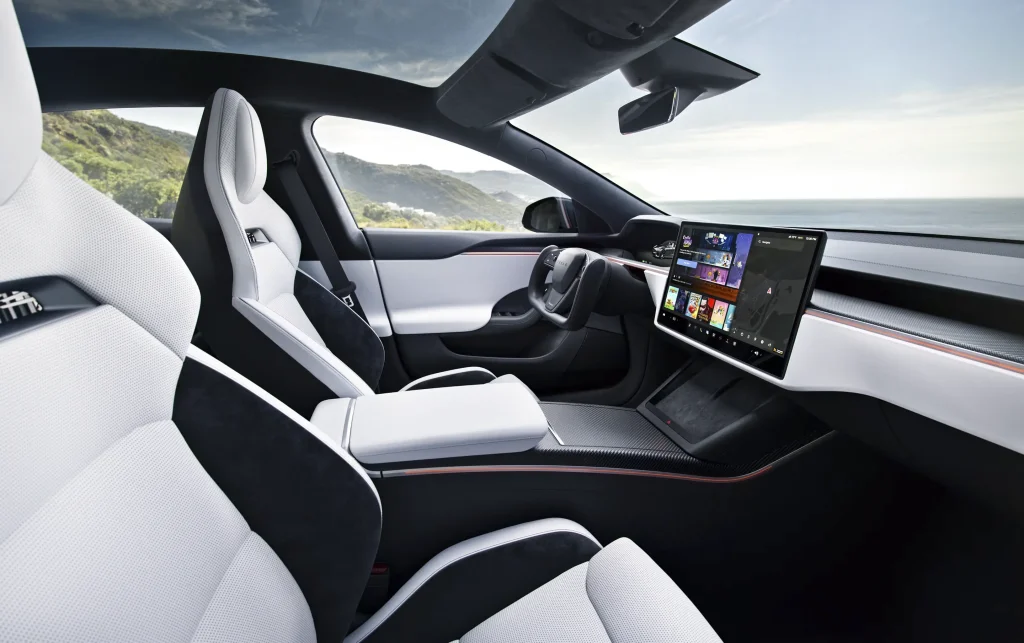
Tesla Model S Trims and Performance Specs
Tesla offers two versions of the Model S, both built for speed and efficiency. The Long Range AWD delivers exceptional range and smooth power delivery, while the Plaid trim pushes performance to supercar levels. At launch in 2012, Tesla offered 4 trims for Model S, including: Base, Performance, Signature, and Signature Performance. Over the years, Tesla has offered variants such as 60, 70, 75D, 85D, P85D, 90D, 100D, Long Range, Performance, Plaid, etc.
Now in 2025, Tesla offers 2 enhanced trims of the Model S, the AWD long-range and Model S Plaid.
Below is a quick overview of their drivetrain setups, power, and acceleration:
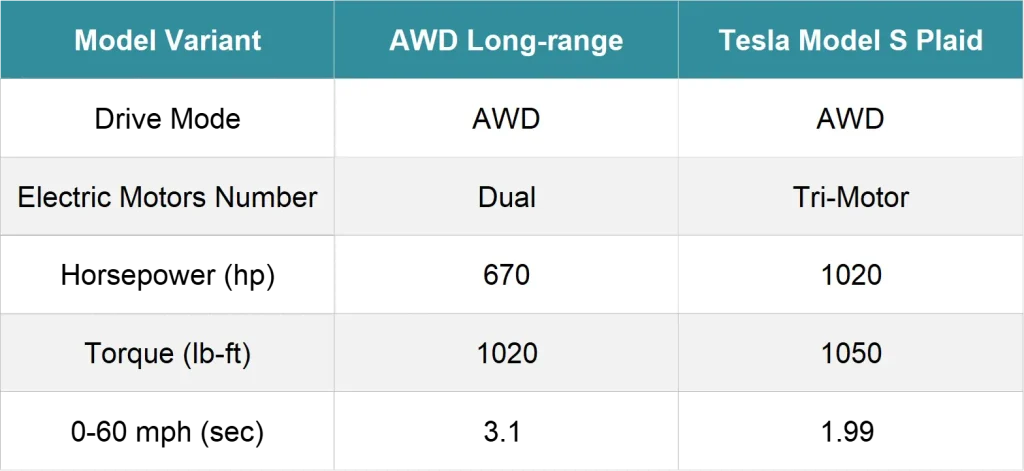
The Model S AWD long range utilizes Tesla’s dual-motor setup, while the Model S Plaid is equipped with Tesla’s tri-motor setup and delivers instant torque.
The Plaid’s tri-motor system produces over 1,000 hp, achieving a 0–60 mph time of around 2 seconds, while the Long Range’s dual-motor version balances performance with efficiency, and it’s still able to go 0–60mph in just 3.1 seconds.
Tesla Model S Battery and Charging Capabilities
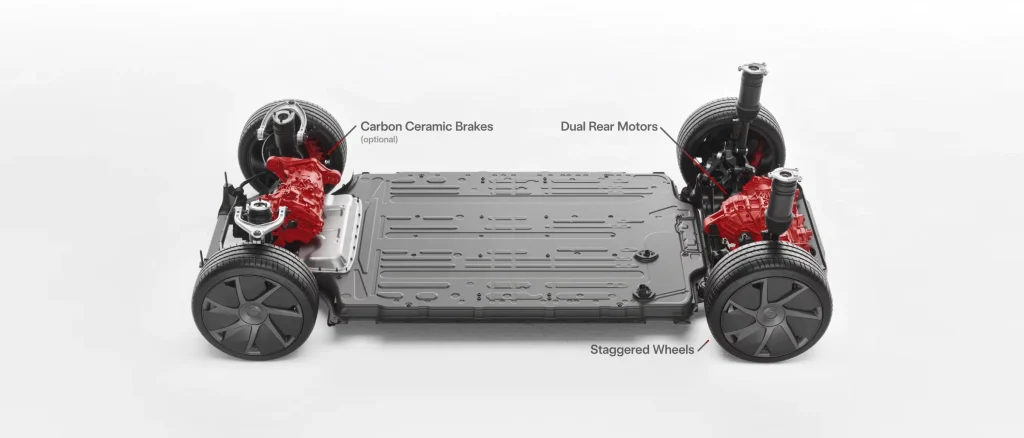
Each Model S variant uses Tesla’s advanced lithium-ion battery pack, offering a nominal capacity of 100 kWh. The Long Range provides the highest range, while the Plaid sacrifices a small portion for performance.
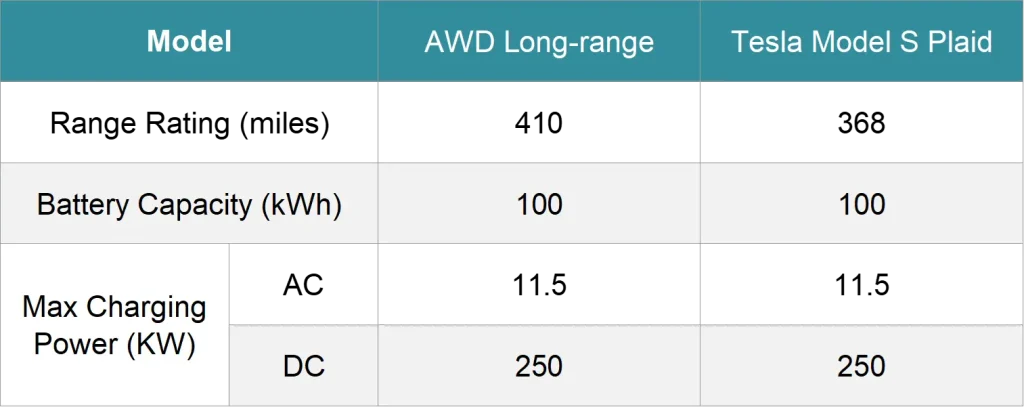
● Battery capacity: AWD Long-range | 100kWh with an estimated EPA range of 410 miles.
○ Model S Plaid | 100kWh with an estimated EPA range of 368 miles.
○ Range Rating: AWD Long-range | 410
○ Model S Plaid | 368
○ Max charging: AWD Long-range | 11.5KW AC | 250KW DC
○ Model S Plaid | 11.5KW AC | 250KW DC
Both trims support up to 250 kW DC fast charging via Tesla’s latest Supercharger V3 and V4 networks. On the AC side, the onboard charger allows a maximum of 11.5 kW in North America (single-phase) or 16.5 kW in regions with three-phase power.
The Model S uses the NACS (North American Charging Standard) connector, ensuring compatibility with both Tesla Superchargers and most third-party DC chargers using a CCS To NACS Adapter.
How Fast Can You Charge A Tesla Model S?
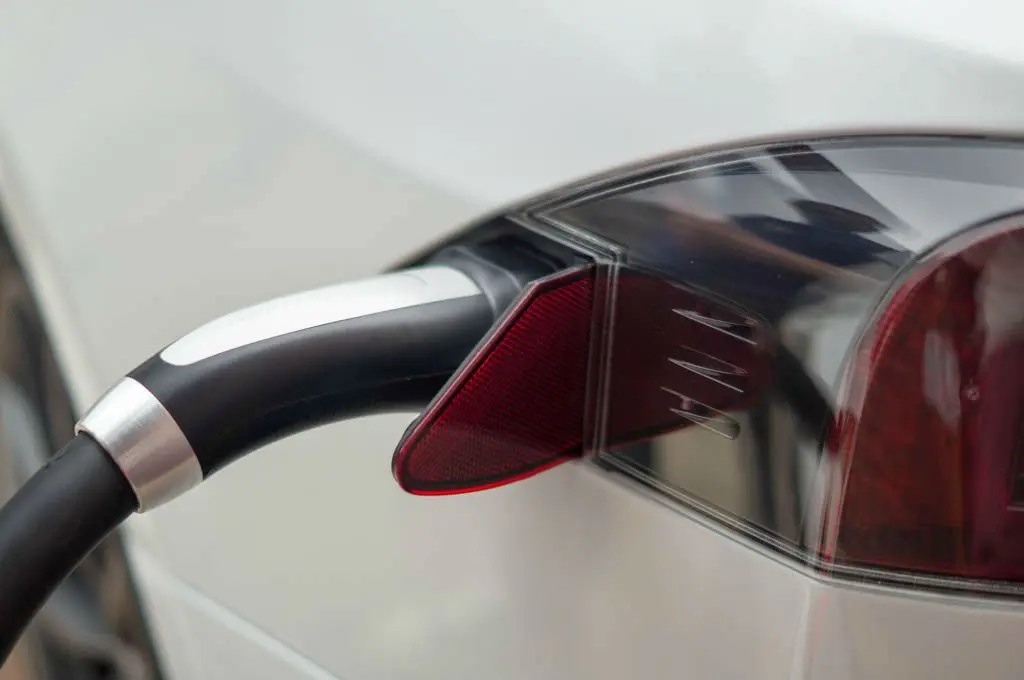
Charging time depends on the power source and charger type. There are mainly 2 different types of chargers that you can use. For daily use, Level 2 home charging (240 V) is ideal. On a Level 2 charger, a full charge typically takes between 9 and 11 hours using the Wall Connector. When you’re on the road, Tesla’s Supercharger network or CCS1 enables a rapid option, which typically takes 25 minutes to charge a Tesla Model S.


The (NEMA 14-15) is rated for safely handling 50A of current. However, most American homes equipped with a Level 2 (NEMA 14-15) charger outlet can safely support 40A of charging in accordance with (National Electrical Code) NEC standard. The NEC requires that the continuous charging load should not exceed 80% of the circuit’s rated capacity. That means a Level 2 (NEMA 14-15 50A) charger can safely deliver 40 amps, which is 80% of its maximum rated capacity.

At a Supercharger, both trims can regain 200 miles of range in about 15-20 minutes under ideal conditions. However, real-world results vary depending on battery temperature, charge level, and grid load.
Can CCS be Used for Tesla Model S?
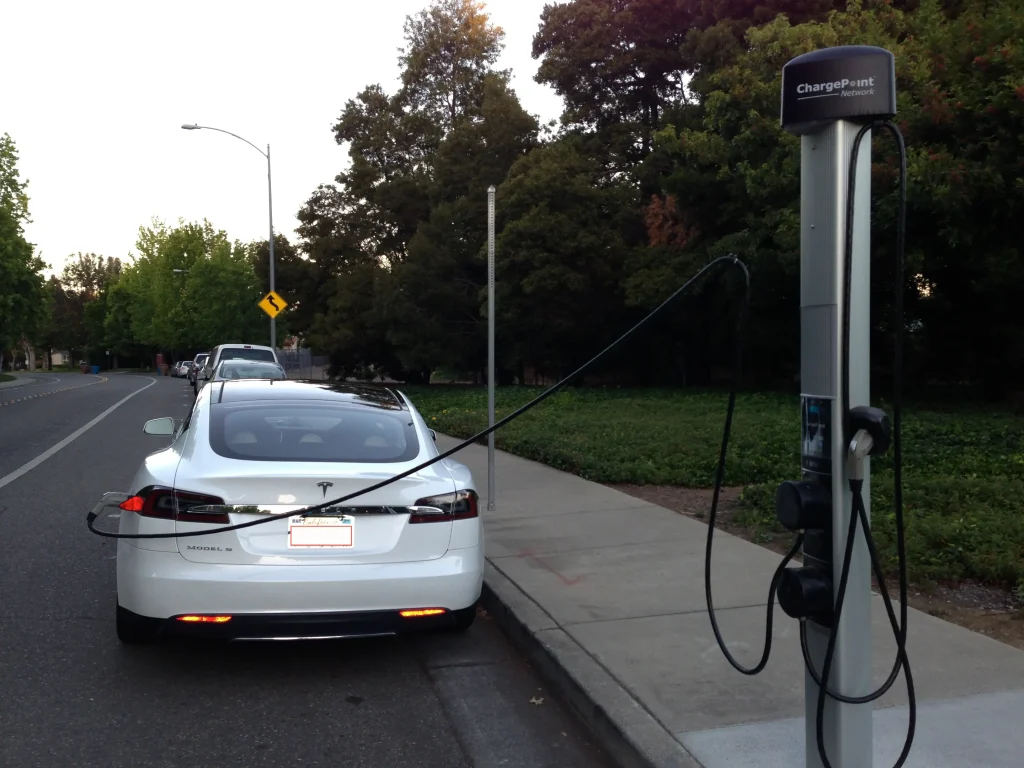
Yes, a Tesla can be charged at a CCS1 station. Although the Tesla is equipped with a NACS port, for CCS1 DC charging, you can use a CCS To NACS Adapter. The adapter will allow your Tesla to integrate with a CCS charging station. The maximum charging power you can obtain from a CCS1 station is 250kW DC for the Tesla Model S.

Electricity Cost by U.S. Region
Charging costs differ across states due to electricity pricing. According to EIA (July 2025), the average U.S. residential rate is $0.175 per kWh, while commercial rates average around $0.14 per kWh.
Average Electricity Cost by U.S. Region (2025)
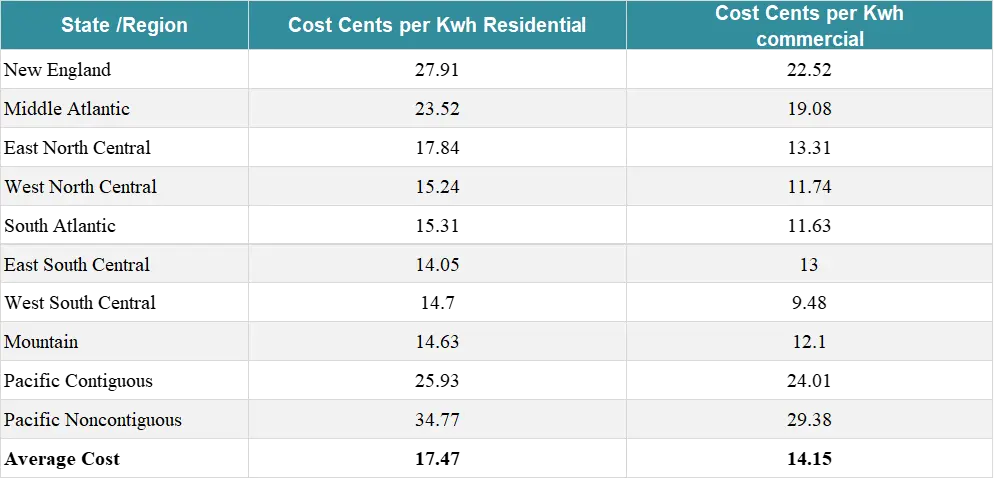
In general, home charging is the most cost-effective. Even when local rates are higher, it’s still cheaper than public DC fast charging, which typically ranges between $0.30 and $0.50 per kWh.
If you frequently travel, Tesla’s in-car navigation automatically routes you through the lowest-cost Superchargers available along your route.
Is it cheaper to charge a Tesla at a Supercharger?: Charging Cost Estimates
No, charging at a Tesla supercharger costs more than charging at home with a level 2 charger. Although the Supercharger is extremely fast, compared to home charging it costs more.
To estimate charging expenses, let’s look at both home and public options. The following table compares the cost per full charge and per 100 miles for each trim:
Charging Cost Comparison (Home vs Public)

At home, a full charge for either trim costs roughly $17–$18, depending on local rates.

Using a Supercharger raises that to around $35, but it’s significantly faster.
A mix of home and public charging typically offers the best balance of convenience and cost efficiency for Model S owners.
Conclusion
In this Tesla Model S charging guide, we covered everything you need to know about keeping your Model S powered efficiently and provided practical insight into how to charge a Tesla Model S in different scenarios. We explored the differences between the Long Range and Plaid trims, their battery capacities, charging speeds, and how long it takes to charge at home or at a Supercharger. We also compared home and public charging costs, showing why home charging remains the most affordable choice.
With support for up to 250 kW DC fast charging and 11.5–16.5 kW AC home charging, and with the NACS port plus a CCS-to-NACS adapter, the Model S connects easily to both Tesla’s Supercharger network and third-party stations — making charging fast, simple, and convenient anywhere you go.
